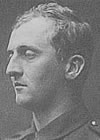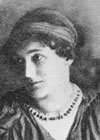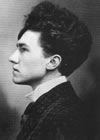
A. Critical and Comparative Studies
3. Flint, F. S. ‘History of Imagism’. Egoist 2 (1915): 70-71.
Succinct account of the birth of Imagism, beginning ‘somewhere in the gloom of 1908’, with T. E. Hulme and ‘a companion’ forming the Poet’s Club, and ending with Pound’s anthology Des Imagistes in 1914. Makes clear the degree to which Imagism from the earliest stages borrowed from Japanese poetry and what was understood to be Japanese poetics, and equates the latter both with reliance on a central image and with vers libre. The ‘Imagists’ Flint mentions, who beginning in March 1909 met weekly at a Soho restaurant, include himself, Hulme, Edward Storer, F. W. Tancred, Joseph Campbell, Florence Farr, and, from April 1909, Pound. What the group had in common ‘was a dissatisfaction with English poetry as it was then . . . being written’, and among several forms and techniques proposed to revitalise English verse were ‘pure vers libre’ and ‘Japanese tanka and haikai’, the latter of which all present ‘wrote dozens of . . . as amusement’. These amusements seem not to have survived, but their effects are traceable in the published work of all those who were present.






